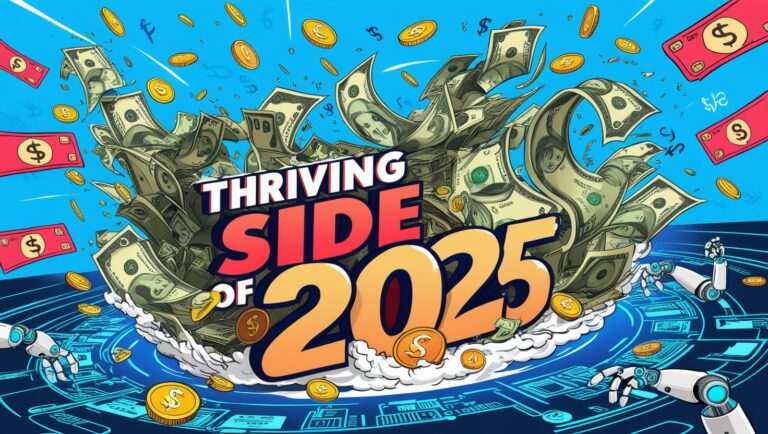
In the digital age, writing and publishing eBooks has emerged as a lucrative way to generate passive income. With low overhead costs, global reach, and the ability to earn long-term royalties, eBook publishing is an attractive option for aspiring writers, entrepreneurs, and subject matter experts. This guide will walk you through the entire process of creating, publishing, and marketing eBooks to build a sustainable passive income stream.
1. Why eBooks Are a Great Source of Passive Income
eBooks provide a scalable way to earn money while leveraging your skills and knowledge. Unlike traditional publishing, which requires printing and distribution, eBooks are sold digitally, reducing costs and barriers to entry. Here are some key benefits:
- Low Startup Costs – Minimal expenses for writing, formatting, and cover design.
- Global Reach – Digital platforms like Amazon Kindle and Apple Books allow you to reach a worldwide audience.
- Long-Term Earnings – eBooks can generate income for years after publication.
- Flexible Topics – Write about fiction, non-fiction, self-help, or niche subjects.
2. Finding the Right Niche and Topic
Choosing the right niche is crucial to your success. Conduct market research to identify topics that are in demand and align with your expertise. Here are a few tips:
- Identify Your Strengths – Write about subjects you are passionate about or have deep knowledge in.
- Solve a Problem – Non-fiction books that address specific problems often perform well.
- Analyze Market Trends – Use tools like Amazon Best Sellers, Google Trends, and keyword research tools to find popular topics.
- Consider Fiction Genres – Romance, mystery, and fantasy are consistently top-selling genres.
3. Outlining and Writing Your eBook
A well-structured eBook keeps readers engaged and delivers value. Follow these steps to create a compelling eBook:
- Outline Your Content – Break down your book into chapters and sections.
- Set Writing Goals – Dedicate a specific amount of time each day to writing.
- Write in Drafts – Focus on completing a rough draft first, then revise and edit.
- Keep It Engaging – Use clear language, examples, and stories to enhance readability.

4. Formatting and Design
Your eBook’s presentation can significantly impact sales. Proper formatting and an eye-catching cover are essential.
- Use eBook Formatting Tools – Programs like Scrivener, Reedsy, and Kindle Create help format your manuscript.
- Create a Professional Cover – A visually appealing cover can boost sales. Consider hiring a designer or using tools like Canva.
- Proofread and Edit – Ensure your eBook is free from grammatical errors and typos.
5. Choosing the Right Platform for Publishing
There are several platforms where you can publish and distribute your eBook. The most popular include:
- Amazon Kindle Direct Publishing (KDP) – The largest platform, offering global reach and high royalties.
- Apple Books – Ideal for reaching iOS users.
- Barnes & Noble Press – Targets the U.S. market.
- Kobo – Popular in Canada and internationally.
- Smashwords – Distributes to multiple retailers and libraries.
6. Pricing Your eBook
Pricing your eBook competitively can drive more sales. Consider these factors when setting your price:
- Research Competitors – Look at similar eBooks to determine market rates.
- Experiment with Pricing – Test different price points to see what maximizes sales.
- Consider Free Promotions – Offering your eBook for free initially can boost downloads and reviews.
7. Marketing and Promoting Your eBook
Effective marketing is crucial for driving sales. Use multiple channels to promote your eBook:
- Leverage Social Media – Share your book launch on Facebook, Twitter, Instagram, and LinkedIn.
- Build an Email List – Engage with readers and inform them of new releases.
- Use Amazon Ads – Advertise directly on Amazon to reach more potential buyers.
- Collaborate with Influencers – Reach out to bloggers and influencers in your niche for reviews and promotions.
- Run Promotions – Offer discounts or limited-time deals to attract new readers.
8. Building a Series or Brand
Creating a series or multiple eBooks in the same niche helps build a loyal readership and increases long-term income. Consider writing follow-up books, companion guides, or expanding on related topics.
9. Passive Income Strategies
To maximize passive income, automate and optimize the process:
- Write Multiple eBooks – The more eBooks you publish, the higher your earning potential.
- Repurpose Content – Turn blog posts, courses, or podcasts into eBooks.
- Bundle Books – Package multiple eBooks as a collection at a discounted price.
- Translate Your Work – Reach international markets by translating your eBooks into other languages.
10. Monitoring and Adjusting
Continuously monitor your sales and adjust your strategy to improve results. Track performance using:
- Amazon KDP Reports
- Google Analytics (if linked to a personal website)
- Feedback and Reviews

Conclusion
Writing and publishing eBooks is a rewarding way to generate passive income while sharing your knowledge and creativity. By carefully selecting topics, creating quality content, and marketing effectively, you can build a sustainable income stream that continues to grow over time. With dedication and persistence, eBook publishing can become a significant part of your financial success.






